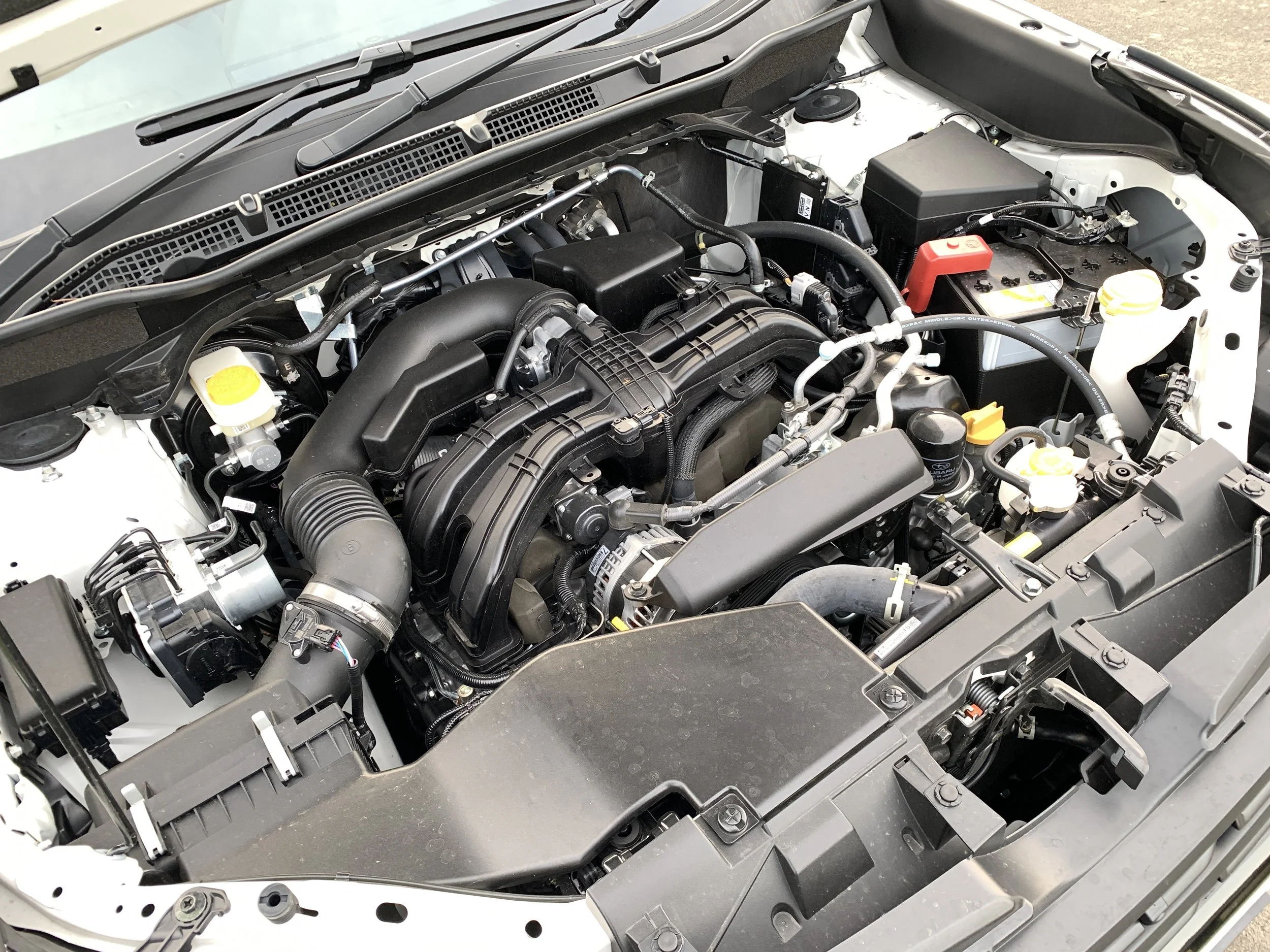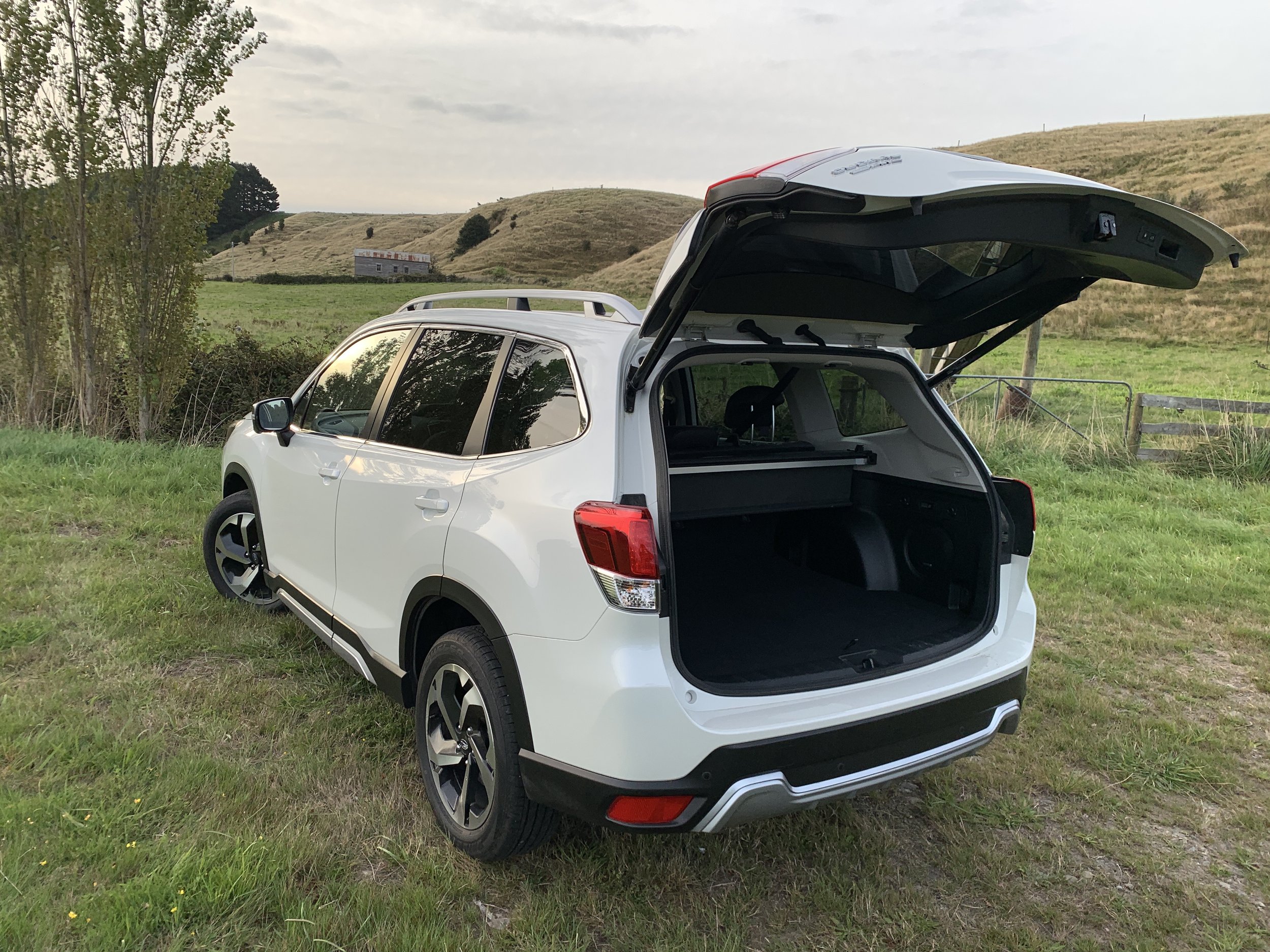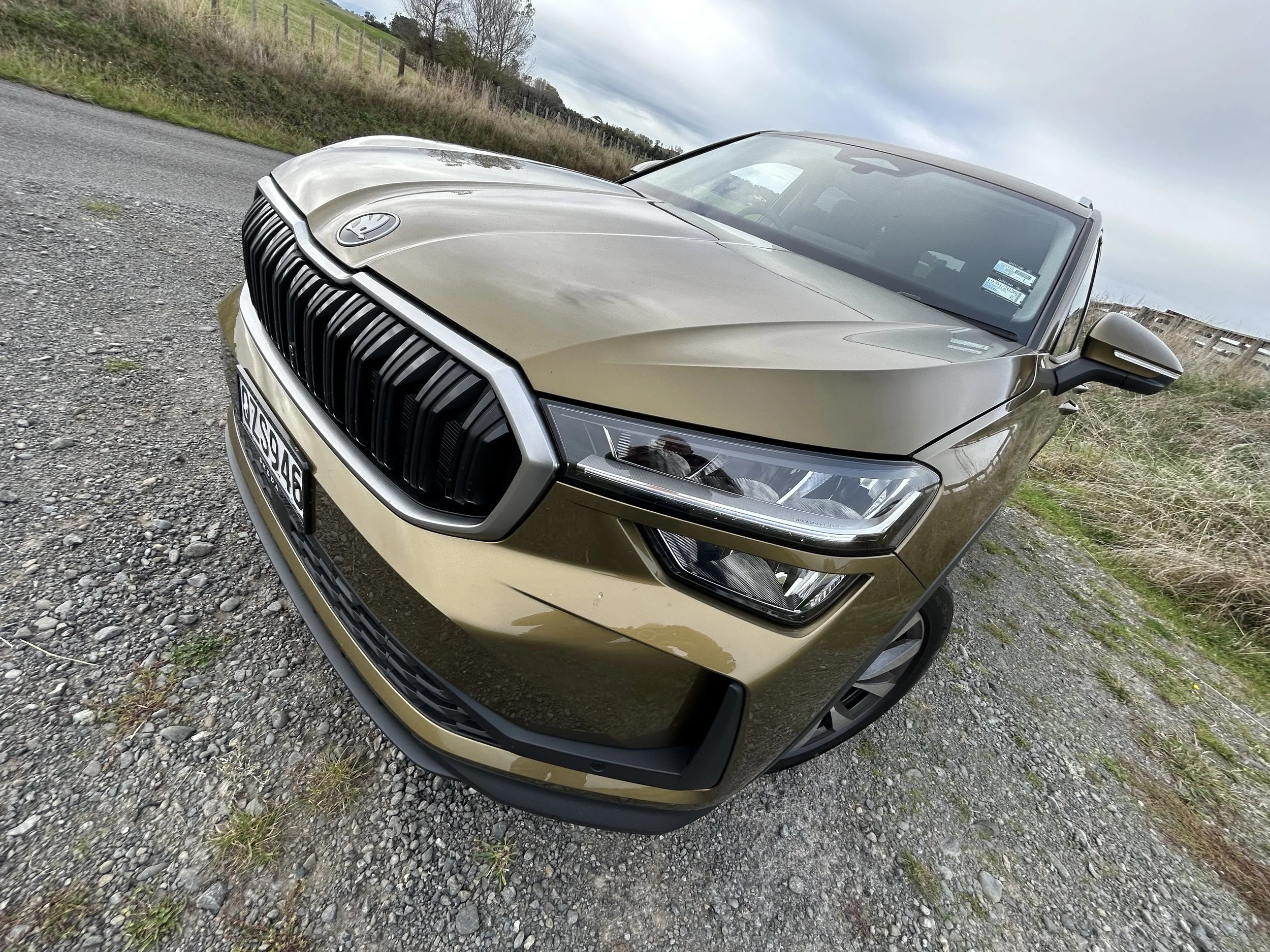Subaru Forester Premium road test review: Helicopter parenting phase
/An update of this staple sees it gain even more safety and comfort features.
Price: $52,990
Powertrain: 2.5-litre horizontally opposed petrol engine, 136kW/239Nm, Lineartronic CVT automatic, claimed combined economy 7.4 litres per 100km, 168g/km CO2.
Vital statistics: 4625mm long, 1815mm wide, 1730mm high, 2670mm wheelbase.
For: Builds on strong reputation; high safety specification; holds neutral ground with Clean Car.
Against: Active safety items can be annoying; styling is dating.
TWENTY-five years of steadfastly maintaining as the outdoorsy offering among a gaggle of medium-sized sports utilities.
Much opposition is so urbanised, to the point of being front-driven. Owners of those probably consider country-style to mean wearing chinos and a V-necked sweater.
The Forester is more bucolic choice. It has always been exclusively all-wheel drive, its ground clearance has traditionally been a little higher than the norm, it has always had specific off-road modes and the boxer engines have always offered decent low-down grunt.
Although the original model was built off a platform shared with the Impreza hatch, it wasn’t a jacked-up SUV version of a road-tuned car. As the Legacy-based Outback was and as the Impreza-based XV still is.
The latter are impressive vehicles yet it could be argued Forester stands as the only true Subaru SUV.
We’re now into the fifth generation. Still offering that country-tough edge? With the latest facelift being all in the interests of improved comfort and better safety, you might wonder.
For example, Driver Monitoring System now includes gesture-controlled temperature adjustment for the air conditioning; just wave a hand in front of the control panel. I’d presume that’s to help prevent any need to avert the eyes from the road ahead.
DMS continues to feature Facial Recognition which records your face when you position yourself in the driver’s seat and automatically adjusts seat position, door mirrors, air conditioning and even some instrument displays to suit.
When you’re out on an open road, the vehicle busies itself reminding you both visually and noisily to keep your eyes peeled and not let your gaze wander, not get drowsy and wander toward road markings.
Does this make Forester something of an automotive equivalent of a helicopter parent? That compelled me to take the car into rough country.
In my case, that was a matter of heading from New Plymouth toward the King Country where there are plenty of challenging, often unsealed roads. In this instance, I started on seal, first from a main route to undulating secondary roads and then onto narrow unsealed tracks through to isolated farmland and forestry.
Here the car’s true worth once again manifested. That new-age comfort and safety trickery hasn’t compromised any of the vehicle’s abilities off the seal. It’s just keeping a closer eye on what you’re up to, that’s all.
In fact Forester’s rough country abilities have been slightly improved as part of the upgrade. The front suspension has been re-tuned for better ride comfort and steering response, and there are new engine mounts for reduced noise and harshness.
The Forester’s X-Mode – which on this flagship runs to deep snow and mud settings – has also been revised so it now automatically re-engages once the vehicle’s speed drops below 35kmh.
X-Mode is great. Once it is engaged, it activates a series of controls over the throttle, transmission, power and torque distribution and hill descent control. All in the interests of enabling best traction in slippery or really hilly conditions.
So after bouncing and sliding along a series of very secondary roads, I headed back towards civilisation satisfied the Forester continues to be everything it always has been. One of the most capable medium-sized SUVs you can buy.
Even so, the safety and comfort improvements are important.
There’s no doubt there’s something special about this vehicle being capable of both recognising the driver – it is programmed to recognise the faces of up to five drivers - and adjust seats, mirrors and other things to suit each individual, and then monitoring the driver’s behaviour.
It uses a camera in the visor of the multi-function display to keep a close watch on the driver’s eyes, and if it judges that those eyes are looking away from the road for too long, or are beginning to become drowsy, then it will use artificial intelligence to calculate the time the eyes are averted or closed, and issue both visual and audio alerts.
Is all this necessary? Probably not. Yet it is worthwhile. Importantly, it will only issue a warning when it judges the driver is doing something wrong, which means that under normal circumstances the system remains in the background, literally keeping its eye on the driver’s eyes.
It's a bit like that other very good safety feature aboard all Subarus these days: EyeSight, which uses cameras to judge the roadscape ahead is safe.
As part of the facelift there have been some additions to EyeSight, including a lane centring function, lane departure warning, and autonomous emergency steering. It all adds up to a system which seems to be constantly telling the driver off via series of beeps and visual signals.
Like it or not, once again it’s there in the interests of driver safety. The same can be said about various other safety features that are there under a Vision Assist banner.
These include rear cross traffic alert, lane change assist, a side view monitor and front view monitor, as well as the usual rear view camera.
From the cosmetic perspective, not a lot has been done to the 2022 Forester Premium, which means it remains a fairly conservative vehicle.
The front end has been refreshed via new-look headlights, new fog lights, front bumper and grille, the cladding under the rear bumper has been updated, roof rails have a revised silver finish and it has another style of 18-inch alloys.
On the inside, there’s an update instrument panel design, and new-look armrests on the doors. Overall, not a lot of change – not that there needed to be, because at the Premium level the Forester already has an eight-inch touchscreen, nine-speaker Harmon Karden audio, satellite navigation with complimentary map updates every three years, and – of all things – a single disc CD player.
There’s no change to the Forester’s powertrain either. The Premium model continues to be powered by Subaru’s 2.5-litre direct injected boxer engine that offers 136kW of power and 239 Nm of torque, and which is mated to the brand’s excellent Lineartronic CVT automatic.
Maximum torque coming in at 4400rpm is no concern; plenty of grunt avails a lot lower down the revolutions band. It’s a good drive, made better when required via the Si-Drive system that can be flicked into a Sport mode for improved performance.
Handling remains very secure thanks to the vehicle’s low centre of gravity and all-wheel drive, aided by the likes of torque vectoring, stability control, traction control, electronic brake distribution and brake assist. And on the rougher roads or worse, the Forester’s 220mm ground clearance combines well with the enhanced X-Mode setup.
Is this facelifted Forester Premium becoming a little too nanny state? For the tech it has gained, it has lost none of its all-wheel-drive talent. That’s the most important consideration.





















